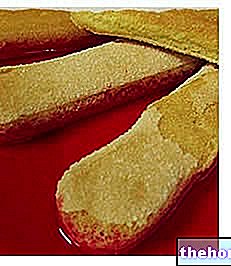Rose liqueur
Starting from the skilful maceration of rose petals in alcohol, a delicately scented and extremely pleasant-tasting liqueur solution is obtained, known as rosolio.
The term “rosolio” evokes both roses, the basic ingredient, and oil, which recalls the particular viscosity of the distillate.

Rosolio proper is prepared with rose petals, alcohol, water and sugar; more generally, rosolio can be characterized by any essence, such as, for example, extracts of licorice, anise, cedar, coffee, chocolate, etc.
Preparation of the rosolio
Ingredients for the preparation of rosolio:
- 400g of 95 ° alcohol
400g of demineralized water
400g of sugar
10-20 rose petals
Many sources define rosolio "a liqueur preparation consisting of water, sugar and alcohol in equal parts, enriched with rose oil (when it comes to rosolio proper) or with other essences". The rose petals must be chosen with care, starting from organic roses, not chemically treated; it is advisable to place the rose petals (10-20, according to preferences) in a mortar, along with 50 grams of sugar. The mixture obtained with crushed petals and sugar is added to pure alcohol, placed inside an airtight container. Maceration must last for at least 10 days, in order to allow the alcohol to extract the essential principles contained within the rose petals.
During the maceration period it is recommended to shake the container, to facilitate the extraction of the rose oil. At the end of the first period of maceration, add the water and the remaining sugar. After that, it is advisable to let the rosolio rest for another week.
After the time necessary for maceration, the rose liqueur must be filtered, bottled and capped. Before consuming the rosolio, it is advisable to wait at least a couple of months: in this way, the aroma of the liqueur will be more intense and full-bodied.
And here is the Video Recipe of our Personal Cooker with all the secrets to prepare an excellent Rosolio at home.
Rosolio
Problems with playing the video? Reload the video from youtube.
- Go to the Video Page
- Go to the Video Recipes Section
- Watch the video on youtube
Active principles
Alcohol, as we know, is the ideal solvent to extract many active principles starting from vegetable matrices: the maceration of the rose petals with alcohol allows the extraction of citronellol, geraniol, nerol and stearoptene.
Features
The color of the rosolio, captivating, is slightly pink; its intense but delicate fragrance. To the taste, the rosolio is soft, velvety and pleasantly aromatic.
It is an excellent digestive and eupeptic. It is served at a temperature of 25-27 ° C.
Curiosities about rosolio
Particularly curious is the metaphor of rosolio as "male beauty" (as beautiful as a rosolio). Tradition associates rosolio with particular aphrodisiac properties, which however have no real confirmation.
Rosolio produced in the areas of the Amalfi coast is known as concert, macerated in alcohol for 40 days: the name "concert" derives from the very particular preparation of rosolio with 20 different spices (a "concert" of flavors).
In the province of Messina, it is customary to prepare rosolio with oranges and vanilla.
Summary
Rosolio: to fix the concepts ...
Rosolio = concert (Amalfi coast: liqueur preparation with 20 different spices)
- 400g of 95 ° alcohol
- 400g of demineralized water
- 400g of sugar
- 10-20 rose petals
- Crush the rose petals with a little sugar
- Add the petal pesto to the alcohol
- Leave to macerate for 10 days in an airtight container
- Shake often
- Add water and remaining sugar
- Leave to macerate for another 7 days
- Filter and bottle
- Wait two months before consuming the rosolio
Geraniol
Nerolo
Stearoptene
Fragrance: intense but delicate
Taste: velvety, aromatic
Other Alcoholic Alchermes Alcohol test Alcopops Cocktail Alcoholic Alcoholic units calculation Cognac Gin Grappa Alcoholic degree Grappa Limoncino Maraschino Marsala Nocino Prosecco Rum Rum Sherry Sparkling wine Spirits Wine Port wine Vermouth Vodka Vov Whiskey Categories Alcoholic foods Meat Cereals and derivatives Sweeteners Sweets Offal Dried fruit Milk and derivatives Legumes Oils and fats Fish and fishery products Cold cuts Spices Vegetables Health recipes Appetizers Bread, Pizza and Brioche First courses Second courses Vegetables and salads Sweets and desserts Ice creams and sorbets Syrups, liqueurs and grappas Basic preparations ---- In the kitchen with Leftovers Carnival recipes Christmas recipes Light diet recipes Women's, mom's and dad's day recipes Functional recipes International recipes Easter recipes Celiac recipes Diabetic recipes Holiday recipes Valentine's Day recipes Vegetarian recipes Protein recipes Regional recipes Vegan recipes




























